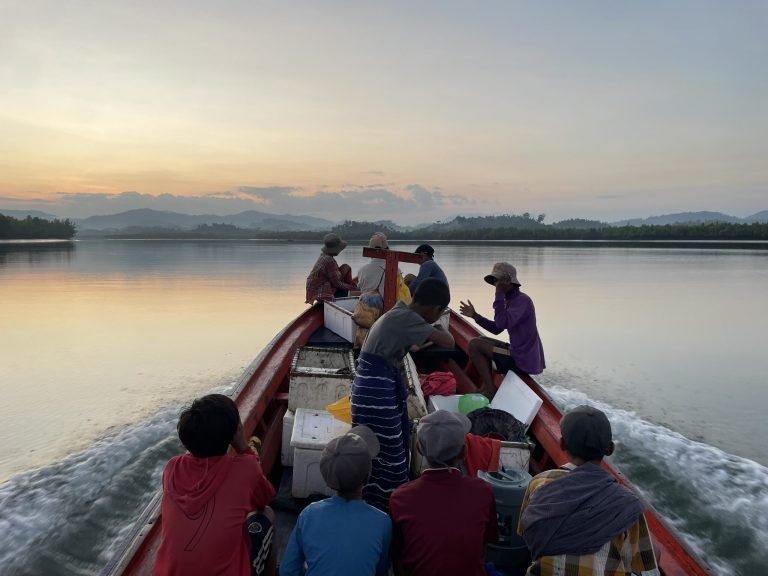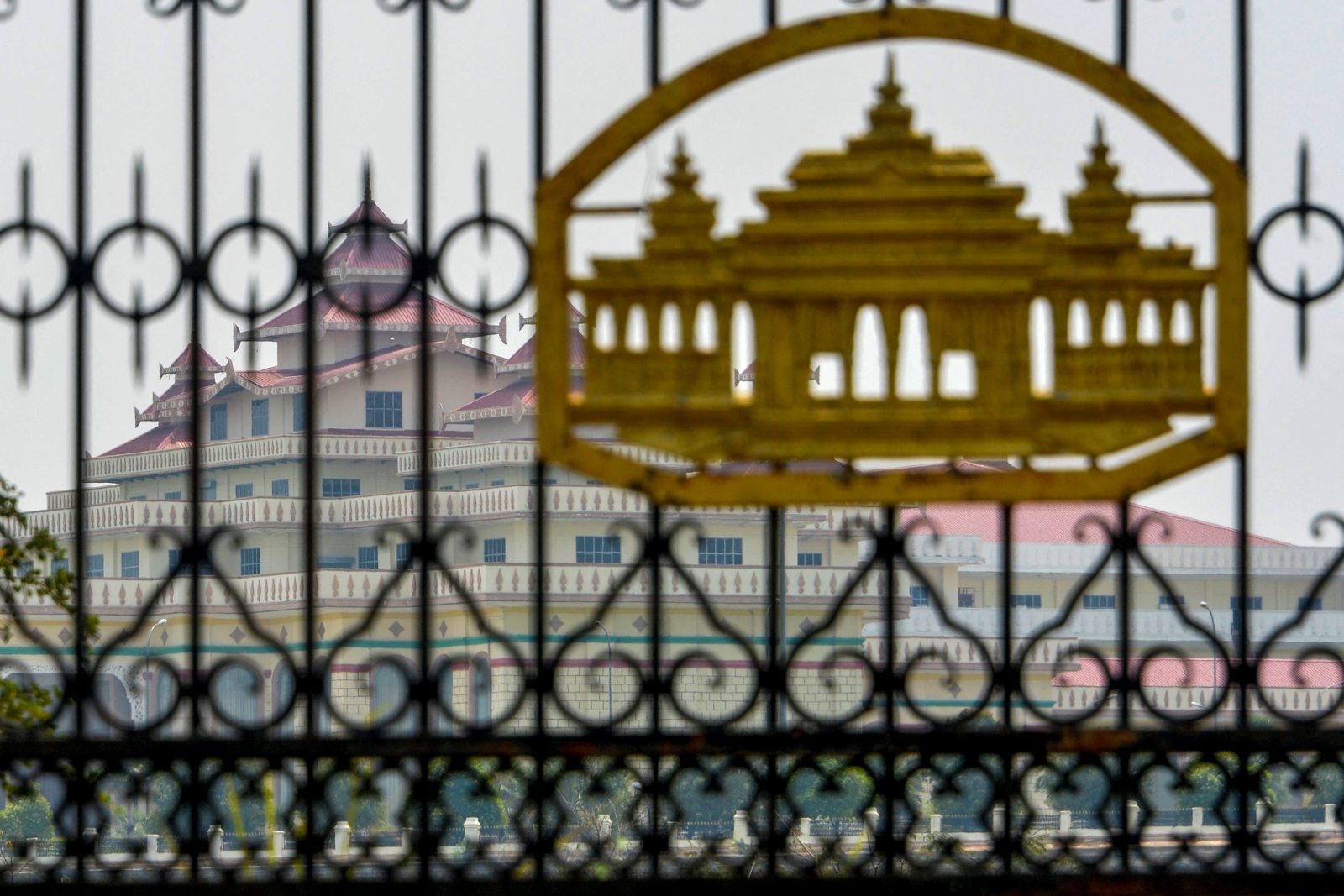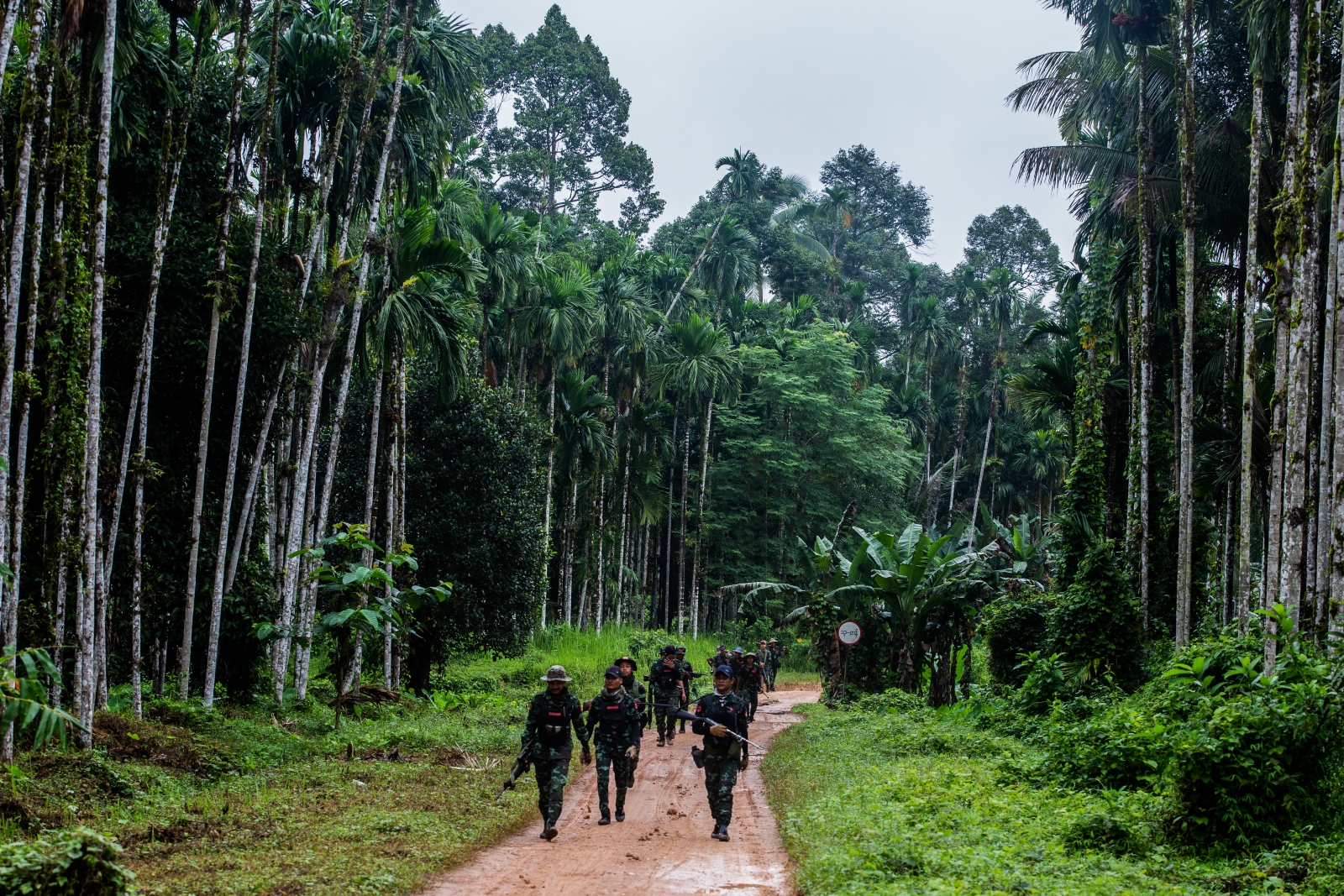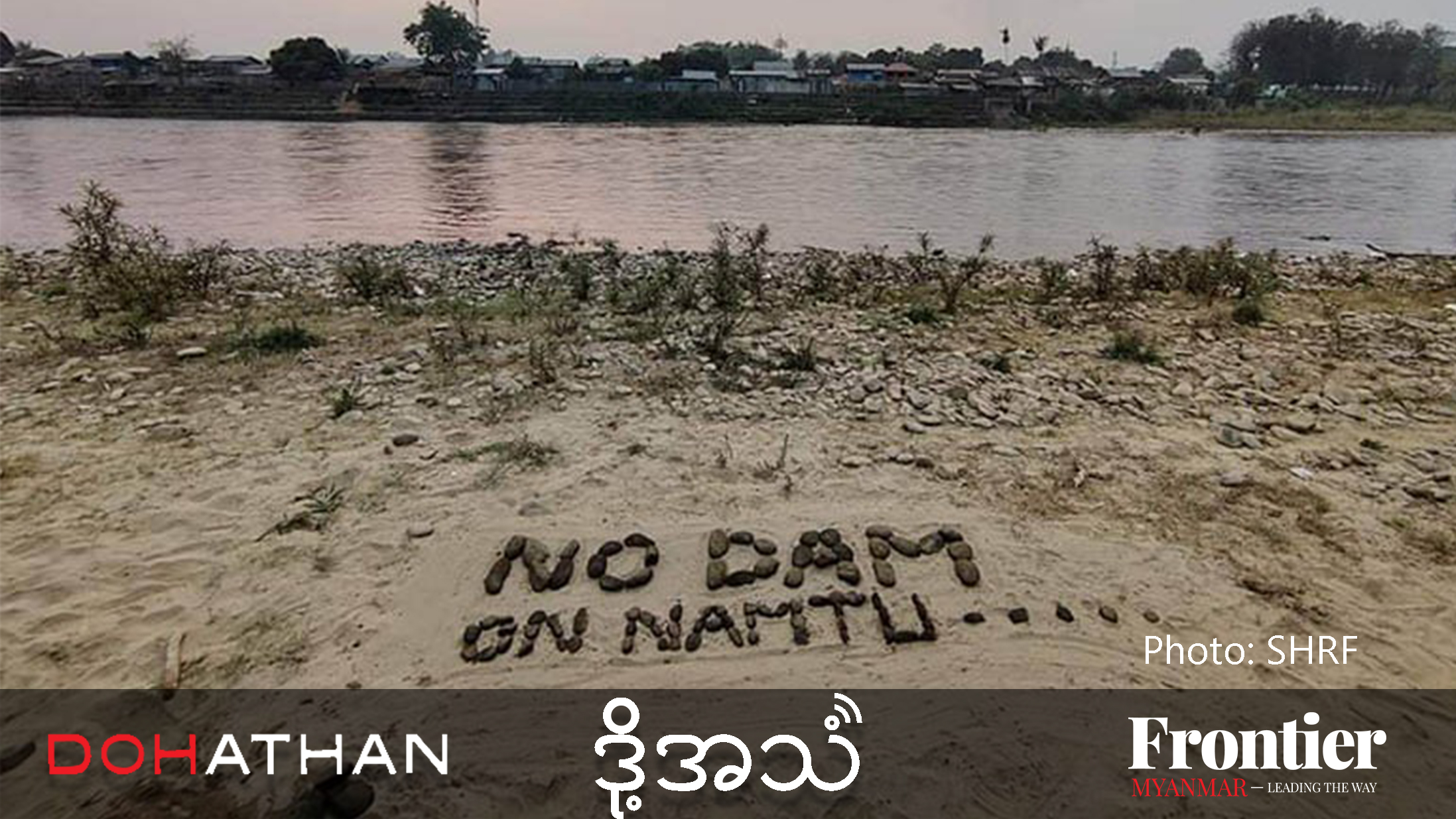Unregulated lead mining is polluting the waters in Tanintharyi’s Bokpyin Township, while locals say most of the money is going to outsiders or lining the pockets of corrupt officials.
By MG HTIN | FRONTIER
The coast of Bokpyin Township, in Myanmar’s southernmost Tanintharyi Region, seems idyllic at first. Clear turquoise waters lap up against shores carpeted with mangroves, opposite an archipelago of largely pristine islands.
But as Frontier took a boat up a creek from the Andaman Sea, the peaceful atmosphere gave way to a deafening racket and a haze of exhaust. Around 50 bamboo rafts floated along the waterway, flowing from the ocean up into Han Ka Pyu village tract, each equipped with smoke-belching motors powering sand dredgers. Women sat on the rafts under tarpaulin shelters, separating lead from sand while men in scuba gear dove underwater.
These remote corners of Myanmar were largely left behind by the surge in development from 2011 to 2021, during the failed democratic transition that saw the country open up to the outside world. But in 2019, underwater lead deposits were discovered in southern Bokpyin, sparking a rush, with hundreds of mining rafts appearing across the area’s saltwater inlets.
But Daw Nyo Nyo, a 60-year-old Han Ka Pyu resident, said the numerous small-scale, unregulated mining operations are largely owned by outsiders and most of the workers are internal migrants, so little of the profits benefit the local community.
“By the time the locals started working, the creeks were already degraded and there was less lead to extract. The guests go back with a lot of money but the villages see no improvements,” she said.
Many of the workers Frontier spoke to had come from Sagaing and Bago regions or Kachin State, areas that have seen heavy fighting since the 2021 military coup. The conflict has also come to Tanintharyi, but at a lower intensity.

Ko Dway, a 37-year-old from Kachin, had been travelling around the country working in different mines for years before the coup.
“Before, I worked at the mines during the open season, then went back to my village to work on a farm in [Kachin’s] Myitkyina Township during the rainy season,” he said. “But since fighting has broken out everywhere, I had to find a place that was more stable to work. Now I’ve been here for two years and haven’t had a chance to go back home.”
News of the mines seems to spread by word of mouth, attracting more members of the same communities, typically people who already have mining experience.
“I couldn’t make a livelihood due to the unfavourable situation there [in Bago]. I heard from my friends that this is a good place to work, so we came,” said Ma Hla Hla*, a 35-year-old woman from Shwegyin Township who has been working in Tanintharyi for one year.
She previously worked in gold mines licensed by Karen National Union, Myanmar’s oldest ethnic armed group, which has allied itself with the broader pro-democracy uprising since the coup. But in March 2021, 11 workers were killed by a military airstrike on the Shwegyin mines, so Hla Hla and her husband looked for a safer environment.
Coming to Tanintharyi was a gamble for them, borrowing K10 million (around US$5,000) in order to buy motorboats, rafts and mining equipment. But it was a risk that paid off – they were able to pay off the debt and send K700,000 per month home to their parents and children.
This lucrative income has attracted some wealthy residents to join the industry, but even then they typically hire internal migrants to carry out the mining because locals lack the necessary experience.
Crackdowns and pay offs
Nyo Nyo said there used to be even more mining activity in the area, with as many as 200 rafts operating on the creek in Han Ka Pyu in 2022, but at the end of that year, regime authorities launched a crackdown.
“Police and soldiers came and seized more than 100 rafts. Some managed to escape, but the ones who were caught had to pay K1.5 million in fines. Nobody was arrested, but the equipment was seized and the mining sites were abandoned for a while. Now they’re conducting their mining activities more discreetly,” she explained.

In Bokpyin, residents say resistance forces primarily operate in the inland jungle, with less influence in the coastal areas and islands where the junta’s security forces largely have free rein. But miners and residents alike complain that rather than regulating the industry and preventing environmental damage, regime officials are simply using it as a source for bribes.
In Han Ka Pyu, mining operators say they must pay a monthly fee of K500,000 per raft to the police. But even then, they can be arrested or extorted for more money at any time.
“The military, the police and their informers are solely motivated by money. No one takes responsibility to protect us,” said Ko Dae Doe, a 40-year-old Bokpyin local who began mining with a more experienced migrant from Sagaing about a year ago. “Regardless of how much we pay, there is no recourse if higher ranking officers come. That’s why we have to frequently relocate. We can’t work for even 15 days a month.”
However, both sides of the conflict are taking a cut. Sources said the mines near Chaung Ka Hpet and Pigeon Island must pay taxes to the junta and affiliated militias, while those operating near Kyeinmetaung village pay off a resistance group.
Ko Than Soe*, a trader in the major port town of Myeik, north of Bokpyin, said any amount of lead can be moved if the right bribes are paid. He said he typically pays a total of K7 million per month to various armed groups operating in the area, and has to pay around K10,000 for each 30 kilogram bag when passing through military checkpoints.
While most of the mine owners and workers are migrants, sources said most of the traders are from Tanintharyi, with the bigger ones operating out of Myeik.
The environment pays the price
This is not the first mining frenzy in Bokpyin, which was also a major source of lead for Japan during its occupation of Burma during the Second World War. Even as of 2000, the remnants of a partially submerged Japanese ship used to transport lead could still be seen in one of the creeks.
According to local lore, the ship got stranded during a low tide and couldn’t be retrieved when the tide of the war turned against Japan. During the previous military regime, which ruled for two decades before 2011, the wreck was finally salvaged and sold for scraps.

In late 2020, the elected National League for Democracy government announced that a limited number of mines could begin operating in cooperation with the state-owned No. 2 Mining Enterprise. Even then, illegal mining was common, but residents of Bokpyin say the situation is much worse today, and the environmental price has been steep.
“The creek used to be filled with oysters and cockles, but they have all disappeared now,” said Ko Myo*, a 40-year-old resident of Han Ka Pyu village tract, who used to harvest those shellfish every October and November.
It has also brought new dangers.
“The worst part is that mixed freshwater and saltwater waterways have been polluted, destroying the crocodile nests. As a result, there’s been a significant increase in crocodiles farther up the freshwater streams,” Ko Myo said.
Many of the villages in the township are seriously underdeveloped, lacking health clinics and other basic infrastructure even before the coup. There was hope that the lead discoveries would contribute to the local economy, but instead the mining has enriched only a small number of people while damaging environmental resources that the wider community depends on.
Meanwhile, with the regime keeping an uncomfortably close eye on local mining activity, migrants are already looking for their next destination.
Ko Dway, the miner from Kachin, said the constant risk of arrest had made his work untenable. “I’ve decided to relocate to a village in Palaw Township, where there are fewer incidents,” he said.
*indicates the use of a pseudonym for security reasons







